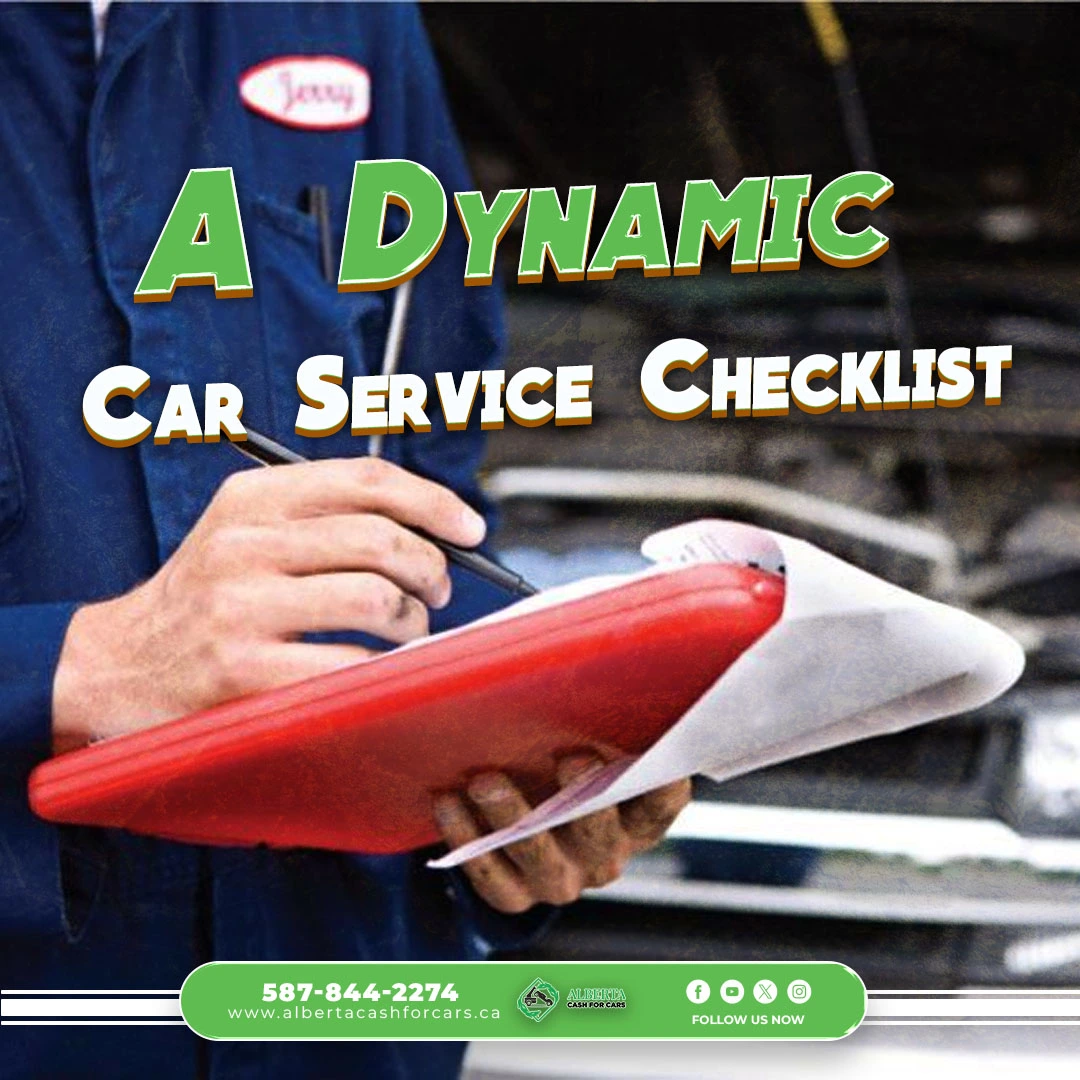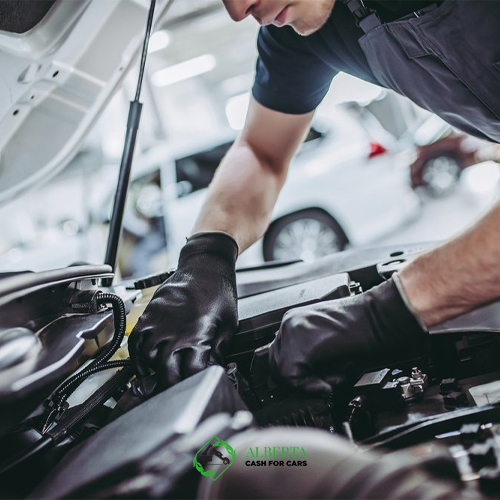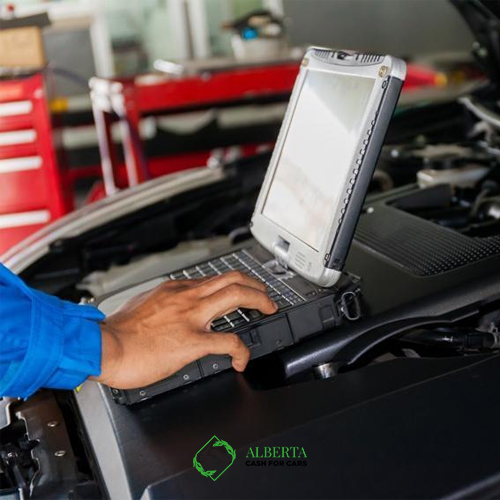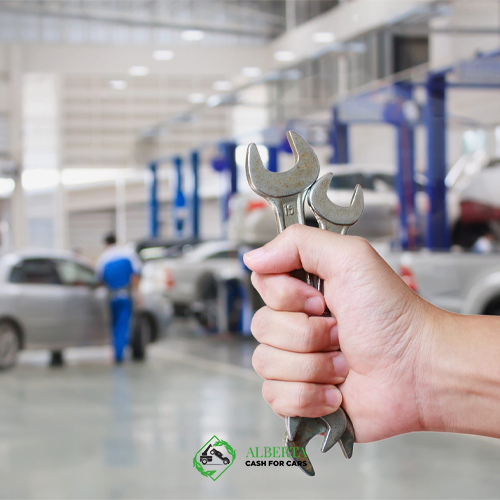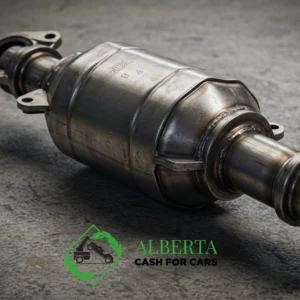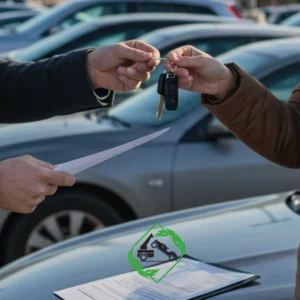Your automobile represents a significant investment, extending beyond mere transportation. Due to this, many individuals recognize the importance of thorough research when selecting the ideal car and ensuring it receives necessary maintenance and repairs. If your car holds substantial value, deviating from a routine Car Service Checklist is advisable, but adhering to specific guidelines becomes crucial for ensuring its longevity. Cars play a central role in people’s lives, underscoring the significance of utilizing a car service checklist to maximize their utility. Neglecting essential car maintenance and repairs can lead to substantial long-term damage. In this article, Cash 4 Cars Calgary aims to elaborate extensively on the car service checklist, providing valuable insights for your benefit.
No Hassle, Just Cash — Book Your Free Pickup or Quote Today!
What is a car service?
Car service means you take your car to the garage for check-up. In this situation, a mechanic checks the condition of your car and checks various parts such as brakes, oil, filters, and engine belt for wear and tear. As part of the service, garages usually replace the car oil filter. They may also recommend that other parts of your car need to be replaced. As a result, auto repair can help you identify and fix any problems before they cause more damage.
Regular car service increases the life of the car. Also, a full-service history can increase the car’s resale value because it shows that you took good care of your car.
Why do I need a car service?
You should take your car to a garage for regular maintenance for several reasons. We have mentioned some of these reasons below:
- In order to keep your car in good condition, you need to avoid unwanted problems
- Regular car service is essential to maintain your car’s safety on the road and prevent breakdowns that could lead to accidents.
- In order to save money, you should take care of car service before significant breakdowns occur
- Because more serious problems require more repair time, you can use car service to save your time
- Using car service leads to maintaining its value at the time of sale
- In order to prevent minor problems from turning into serious damages, you should use car service
- If you want your car to perform optimally, you must use a car service with a proper car service checklist
What does a car service include?
What should be on your car service checklist depends on the type of service you choose, but a full service can include an engine oil and filter change. Checking all car fluids and complete brake check, also more than 40 other key components related to car safety are checked in this service.
In a full service, more parts are checked, and it can include changing car spark plugs and all kinds of important filters and checking factors such as wheel alignment and suspension.
A car service checklist usually includes inspection, maintenance, or repairs to ensure that your car is safe and efficient. There is a wide range of checks, such as checking oil, tires, brakes, exhaust suspension, and other components in the full service. Additionally, this service involves topping up fluids and replacing the oil filter if necessary.
The car service checklist can also include minor repairs; for example, adjusting the timing is one of these minor repairs.
Interim service
This option is less comprehensive than the full service and must be done by a mechanic every 6 months. Of course, remember that this service should not replace a full service but an interim service to fix problems that may become severe.
Full service
This service is very important to keep your car in the best possible condition. Usually, this service should be done every 12 months. Full service includes engine oil, oil filter, and air filter changes. In the full-service process, a mechanic analyzes all the important parts of the car along with the safety and mechanical systems and, if necessary, replaces the parts with a certain life span. If they are not taken care of, there may be big problems.
Manufacturer services
You may require the manufacturer’s services if your car has high specifications or is older. The required information about this is in the manufacturer’s manual, and in this situation, the car needs to be taken to a dealership or garage. These services are usually more expensive, include only official parts and fluids, and are performed by the manufacturer’s specialists.
Major services
This option is more comprehensive than full service and includes many replacements and repairs.
Which type of service should I choose?
Your service should be proportional to your annual mileage, so you should consider this when choosing a service. According to the table below, you can choose the service you want:
| Service Type | Service Interval |
| Regular maintenance | When oil and filter need replacement |
| Interim Service | every 6,000 miles or every six months, whichever comes first |
| Full Service | 12,000 miles or once every 12 months, whichever comes first |
| Manufacturer Service | Check your car’s manual for details according to the manufacturer service schedule |
What regular maintenance should be done on the car service checklist?
Some car parts, prone to wear and tear due to regular use, need regular maintenance to function properly. Regular car maintenance is as follows:
Car oil
One of the most important fluids in a car is its oil. You should note its requirements for changing the car’s oil, refilling, and checking the filter.
Air filter
The car air filter keeps the circulating air inside the car system clean. Clogging of the air filter, in addition to causing damage to car parts and poor performance, also causes damage to the health of the passengers.
Other vehicle fluids
Car oil is not the only fluid that needs to be checked, other fluids, such as transmission fluid, coolants, brake fluids, and washing fluids, should be checked periodically to ensure their performance.
In this car service checklist, we review each one of these items in the section below:
Coolant/Antifreeze
Check the coolant/antifreeze level in the radiator reservoir when the engine is cool. Ensure the coolant level is between the minimum and maximum markings on the reservoir.
Brake Fluid
Inspect the brake fluid level in the master cylinder reservoir. If the fluid level is below the recommended level, add the appropriate brake fluid specified by your vehicle’s manufacturer.
Power Steering Fluid
Check the power steering fluid level in the reservoir. If the level is low, top it up with the recommended power steering fluid.
Transmission Fluid
Consult your owner’s manual for instructions on checking the transmission fluid level. Some vehicles have a dipstick similar to the engine oil dipstick, while others may require a visit to a qualified technician.
Windshield Washer Fluid
Ensure the windshield washer fluid reservoir is filled with a suitable washer fluid solution to maintain clear visibility on the road.
Car battery
The car battery is an important part of routine checks. Periodic checks of the battery will ensure its performance.

Here are some things to do to extend the battery life.
Checking the Battery
Inspect the battery terminals for corrosion or buildup. If present, clean them with a battery terminal cleaner and wire brush. Ensure the battery connections are secure.
Cleaning Battery Terminals
Corrosion on battery terminals can hinder proper electrical connections. Clean the terminals and cable ends. Rinse with clean water and dry thoroughly.
Testing the Alternator
A malfunctioning alternator can lead to battery issues. If you notice dim lights or other electrical problems, have your alternator tested by a qualified technician.
Engine Oil and Filter
The most important car service checklist includes engine oil and filter. The engine oil is the lifeblood of your car’s engine, lubricating its components and ensuring smooth operation. Regularly checking the oil level and changing the oil and filter are vital for optimal engine performance and longevity.
Changing the Engine Oil and Filter
Over time, engine oil becomes contaminated and loses its effectiveness. Follow your car manufacturer’s recommendations for oil change intervals, typically every 3,000 to 5,000 miles or as specified in your owner’s manual. It’s also important to replace the oil filter during the oil change to ensure proper filtration.
Tires and Wheels
Another car service checklist is checking tires and wheels. Properly maintained tires and wheels are essential for safety and optimal handling. Regularly check and maintain the following:
Checking Tire Pressure
Check tire pressure regularly using a tire pressure gauge. Inflate the tires to the recommended pressure specified by your vehicle’s manufacturer.
Inspecting Tire Tread and Condition
Inspect the tire tread depth using a tread depth gauge. Ensure the tread depth meets the legal requirements and look for any signs of uneven wear or damage. Replace tires as needed.
Rotating the Tires
Regular tire rotation helps ensure even wear and extends tire life. Follow the recommended rotation pattern specified by your vehicle’s manufacturer.
Wheel Alignment and Balancing
Misaligned wheels can lead to uneven tire wear and affect vehicle handling. Periodically have your wheels aligned and balanced by a professional.
Replacing Key Filters that Remove Contaminants
Various filters on vehicles require periodic replacing as they fill with trapped gunk:
- Fuel Filter – Swap clogged fuel filters so fuel system pressures and efficiency stay optimal.
- Cabin Air Filter – Refresh filters that clean airflow into the interior to protect occupants.
- Transmission Filter – Some models have replaceable transmission filters to maintain smooth shifting.
Updating filters as a critical car service checklist is simple and prevents contaminated fluids from damaging components.
Car Service Checklist | Testing All Vehicle Lights are Working
Burned out exterior and interior bulbs compromise safety and must be replaced promptly when found nonfunctional:
- Headlights: Test low and high beams plus fog lights for illumination.
- Brake lights: Press brakes to ensure inner and outer brake lights activate.
- Turn signals: Operate all turn signals checking front and rear blinking function.
- Interior lights: Verify dome, map, glovebox, trunk, and other cabin lights illuminate.
- Backup lights: Shift into reverse and confirm bright backup lamps activate.
Read Also: Understanding and Addressing 10 Common Car Issues
What is the basic maintenance of car service checklist?
Keep in mind that following these tips will ensure that you meet the basic maintenance needs of your car:
- Proper inspection of car tires
- A proper check of car brakes
- Checking car lights to ensure safety
- Keeping the inside and outside of the car clean, paying attention to service needs
- Follow the owner’s manual for all required services
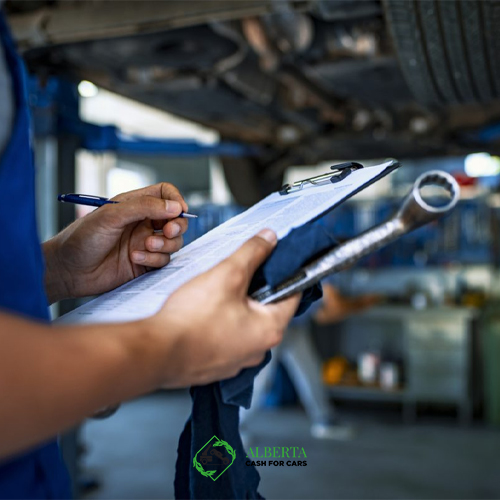
Enhancing Vehicle Longevity: The Importance of Proactive Maintenance
Beyond the standard car service checklist, incorporating proactive maintenance practices can significantly enhance your vehicle’s longevity and performance. Consider implementing a regular schedule for detailed interior cleaning, focusing on areas prone to wear and tear, such as upholstery and carpets. Using specialized protectants on interior surfaces can prevent fading and cracking, maintaining the aesthetic appeal and value of your car.
For the exterior, consider applying a high-quality sealant or ceramic coating after a thorough detailing. These treatments provide an additional layer of protection against environmental elements, preserving the paint’s finish and preventing corrosion. Regularly inspecting and cleaning the undercarriage, especially after winter driving or off-road adventures, is also crucial to prevent rust and damage from road salt and debris.
Additionally, consider investing in a diagnostic tool that allows you to monitor your vehicle’s performance and identify potential issues before they escalate. Modern vehicles are equipped with sophisticated electronic systems, and early detection of faults can save you significant repair costs. Furthermore, staying informed about the latest automotive maintenance technologies and practices can help you make informed decisions about your vehicle’s care.

